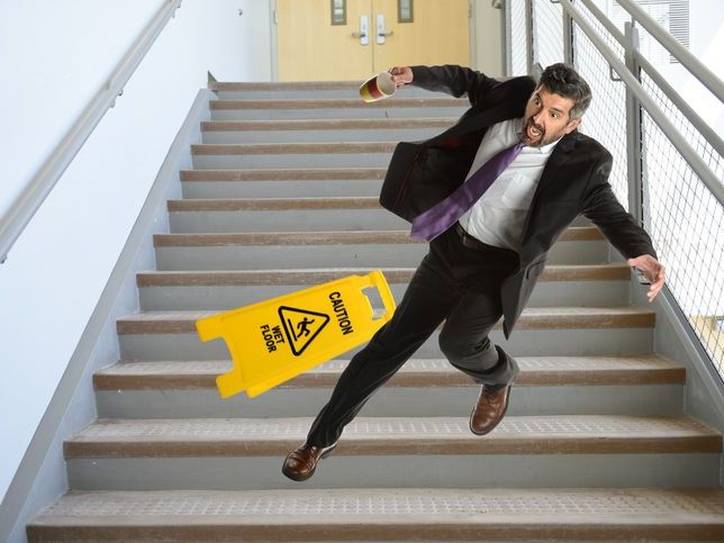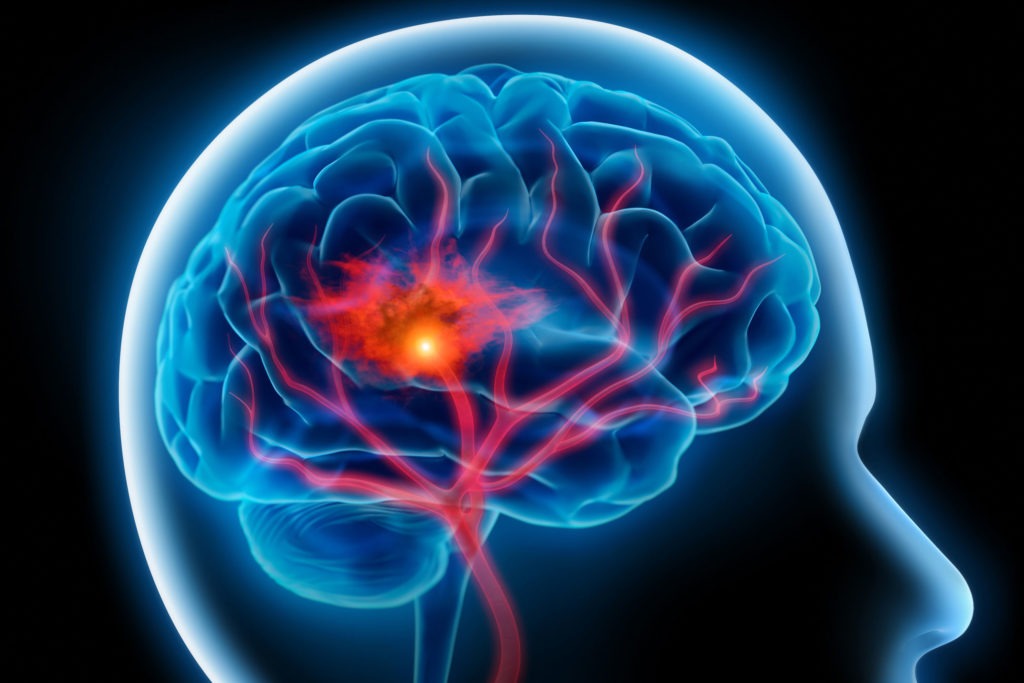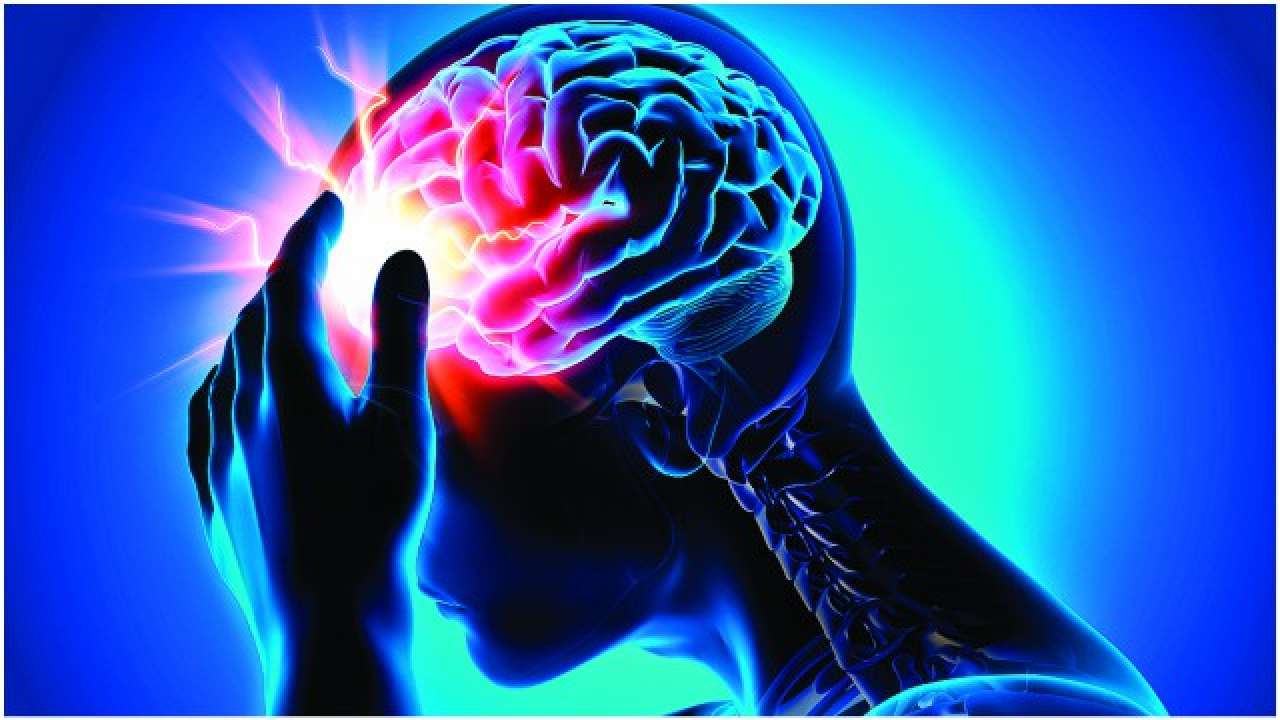
Have you ever experienced a sudden, severe headache? What about a moment when words just wouldn’t come out right, even though you knew what you wanted to say? For one woman, dismissed symptoms like these turned out to be a crucial warning signal, highlighting a vital message for everyone: stroke doesn’t just happen to older people, and recognizing the signs, even temporary ones, is absolutely essential. Understanding what a ‘ministroke’ truly is could be a key step in protecting your health.
What many people call a ‘ministroke’ is medically known as a Transient Ischemic Attack, or TIA. Think of it as a brief interruption in the brain’s blood supply. According to the Mayo Clinic, a TIA occurs when a blood clot temporarily blocks blood flow to a specific part of the brain. It’s quite similar to an ischemic stroke, which is the most common type of stroke.
The critical difference between a TIA and an ischemic stroke lies in how long the blockage lasts. While an ischemic stroke’s blockage persists long enough to cause permanent brain damage, in the case of a TIA, the body typically clears the blockage before lasting harm occurs. The American Stroke Association (ASA) explains that blood flow returns once the clot is gone. However, the longer blood flow is blocked, the greater the risk of permanent damage, and if a clot causing a TIA doesn’t dissolve quickly, it is then classified as an ischemic stroke.
The symptoms you might experience during a TIA often mirror those of an ischemic stroke, according to the Mayo Clinic. These can include sudden weakness, numbness, or paralysis, particularly on one side of your body. You might also notice slurred or garbled speech, or have difficulty understanding others. Vision problems are also possible, such as blindness in one or both eyes or double vision.

Other potential signs include dizziness, a sudden loss of balance, or a severe headache that seems to come out of nowhere. A person experiencing a TIA or stroke might have just one or several of these symptoms. Importantly, these symptoms can be temporary, which sometimes leads people to dismiss them.
However, dismissing these symptoms is a mistake, as medical professionals strongly stress the importance of seeking immediate medical attention. The Mayo Clinic points out that it’s impossible to determine whether someone is having a full – blown stroke or a TIA based solely on symptoms. Even in some cases of stroke, symptoms might seem to resolve on their own, further highlighting the need for evaluation.
The American Stroke Association actually prefers a more accurate term for TIA: a “warning stroke.” This is because a TIA can serve as a significant sign that a full – blown stroke might occur in the future. Statistics underscore this urgency: the National Library of Medicine reports that more than 10 percent of individuals who have a TIA will go on to have a full stroke within three months, and half of these strokes occur within just 48 hours of the TIA.
Read more about: The Hidden Cost of Getting It Wrong: How Misdiagnosis Devastates Lives and Strains Healthcare

The risk doesn’t disappear after the initial period. According to the ASA, about 1 in 3 people who have experienced a TIA will have a stroke within one year. Furthermore, up to 40 percent of those who have had an ischemic stroke report having had a TIA beforehand. The Mayo Clinic also notes that once someone has had a TIA, they are more likely to experience another one.
This is precisely why recognizing even fleeting stroke – like symptoms and acting swiftly is so crucial. Calling 911 immediately is the recommended course of action if you suspect that you or someone else is having a stroke. Fast medical assessment is paramount, as treatment is most effective when started within three hours of the first symptoms.
To help people quickly recognize potential stroke symptoms, the acronym F.A.S.T. is widely used. Each letter prompts you to check for a specific sign. ‘F’ stands for Face: Look for any drooping or numbness on one side of the face. A’ stands for Arm: Check if one arm feels weak or numb, or drifts downward when raised.
‘S’ represents Speech: Listen for slurred speech or difficulty in speaking or understanding. Finally, ‘T’ is for Time: If you observe any of these symptoms, it’s time to call 911 without delay. While F.A.S.T. is a very effective tool for identifying common stroke patterns, it’s important to remember that not all strokes present in this way.
Being aware of less common warning signs is also beneficial. These can include double vision, sudden blindness in one eye, unexplained dizziness, or trouble swallowing (dysphagia). Recognizing these signs can help ensure that someone gets the immediate medical care needed for the diagnosis and treatment of a TIA or stroke, which might otherwise be missed.
While the risk of stroke does increase with age, roughly doubling every 10 years after age 55, it’s vital to understand that strokes can occur at any age. Research indicates that stroke incidence has been rising in younger populations. Interestingly, younger people are also more likely to experience some of the less common symptoms of stroke.
Stroke is a medical emergency where every single minute matters. Rapid assessment and diagnosis allow medical professionals to begin treatment as quickly as possible. Knowing the signs and being prepared can make a significant difference in outcomes.

Preparing means more than just recognizing symptoms. It includes knowing your own potential stroke risk factors. Many factors can increase your likelihood of having a stroke. Traditional risk factors include conditions like atrial fibrillation (AFib), heart disease, high blood pressure, high cholesterol, and diabetes.
Lifestyle factors also play a role, such as not engaging in regular physical activity, using tobacco, and heavy alcohol consumption. Other medical conditions like chronic inflammatory conditions (such as psoriasis or lupus), chronic kidney disease, metabolic syndrome, obesity, obstructive sleep apnea, preeclampsia, premature menopause, primary hypercholesterolemia, and sickle cell disease can also raise your risk. Having a family history of stroke or a personal history of stroke or TIA are also significant risk factors.
It’s also important to note that in the United States, stroke is found to be more common in certain populations, including American Indian, Alaska Native, Hispanic, and Black adults, as well as individuals of lower socioeconomic status and those with limited access to preventive health care.
Read more about: Beyond the Hours: How the Many Dimensions of Sleep Shape Your Health

Understanding stroke risk in young adults is particularly important because their risk factors can differ. Nontraditional risk factors seem to play a larger role in strokes occurring in people under 35. These include conditions like migraines, autoimmune diseases, and thrombophilia, which is an increased tendency for blood to clot. A 2020 report from the American Heart Association pointed out that inherited genetic factors also appear to be more significant in strokes affecting younger individuals.
The same report also suggested that stroke may be underdiagnosed, or that other conditions can mimic stroke symptoms, possibly both. This aligns with experiences like that of Stacy Quinn, a communications professional from northern New Jersey, whose journey highlights the challenges of recognizing stroke in younger individuals and the potential for misdiagnosis.
Stacy Quinn was 41 years old in December 2014 when she suffered a TIA. Her experience began one morning while commuting on a train to New York City. She suddenly developed what she later described as “the worst headache of my life.” At the time, she was used to powering through discomfort, so she took some medicine and continued her commute.
However, while in a meeting later that day, both Stacy and her boss noticed something alarming: she was slurring her speech during a conference call. Quinn recalls it as “a very scary moment,” noting, “It was the first time since I was a little girl that I couldn’t string together what I wanted to say.” Words just weren’t coming out properly, and this happened twice before her speech quickly returned to normal. Despite her boss’s concern, Quinn insisted she was fine and tried to just “power through the day, thinking it was a blip.”
Read more about: Beyond the Hours: How the Many Dimensions of Sleep Shape Your Health
/closeup-of-bloodshot-red-eye-163500111-577ec5073df78c1e1ff2fa1b.jpg)
Her headache, however, persisted. Later, when looking in a mirror, Quinn felt she didn’t “look good” and noticed a red “lightning bolt” — a zig – zag line — in her left eye, which hadn’t been there before, and both of her eyes were bloodshot. Still, she made excuses for her symptoms, attributing them to being tired and stressed. She emailed her mother about the strange experience, and her mom immediately called back, urging her to go to the hospital and warning, “You’re having a stroke.” Quinn thought her mother was likely overreacting but agreed to visit urgent care that night to get checked out.
Unfortunately, her initial visit to urgent care resulted in a misdiagnosis. Quinn said the doctor missed it, perhaps because there was no obvious, simple risk factor to point to; she felt she was “in the best shape of her life” at the time. According to Quinn, the doctor concluded, “I think you just have a migraine and you’re tired,” gave her some medication, and sent her home. Her headache continued for about ten days.
Still not feeling well by New Year’s Eve, Quinn returned to urgent care and saw a different doctor. By this time, her ear had also started bothering her. This time, she was given ear drops. Again, the doctor attributed her symptoms to stress and a bad headache. This experience underscores how TIA and stroke symptoms can sometimes mimic those of other conditions, like migraines or ear infections, leading to potential misdiagnosis.

Experts note that gender can also play a role in how symptoms are perceived. Alison McKenzie, PhD, a professor at Chapman University, points out that TIA and stroke symptoms may differ between women and men. She adds that, as in many areas of healthcare, women are “often not taken as seriously as they should be, sometimes being dismissed as ‘anxious’ or something like that.” Additionally, some clinicians may still primarily associate stroke with older adults.
Being both young and a woman, Quinn felt she didn’t “fit the part” of someone having a stroke. This perception made it difficult even for her to believe that something serious was happening, which is why she initially went back to work despite feeling nauseated and in pain. Luckily, she eventually decided to see a neurologist near her office, whom she credits with saving her life.
This neurologist took a thorough approach, telling Quinn, “I leave no stone unturned.” He sent her for a magnetic resonance imaging (MRI) scan. The MRI ultimately confirmed that she had experienced a TIA. This crucial step highlights the importance of persistent investigation into symptoms, especially when symptoms are atypical or occur in individuals who don’t fit the stereotypical stroke profile.

The MRI provided significant insight into what had happened. Further tests, including a CT scan with dye, confirmed the cause of Quinn’s TIA: a dissection, or tear, in the lining of her carotid artery. As Quinn explains, the carotid artery is a major pathway that delivers blood from the heart to the brain and is composed of three layers. One layer in her artery broke away, creating a flap that was blocking 90 percent of the blood flow from her heart to her brain. The site of the dissection also caused a small pseudoaneurysm, where blood collected.
Her medical team at New York Presbyterian Hospital had to decide between surgery and medication. They determined that operating to repair the artery would be more dangerous. Instead, Quinn was treated with “a cocktail of medications.” She expressed gratitude for the thoughtful process at the hospital, which was equipped with the specialists needed for her unique case.
Quinn’s carotid artery dissection was spontaneous, meaning its cause is unknown and not linked to a specific traumatic event like an accident. She reflects that doctors will “really never know why this happened.” As her artery never fully healed, she faces certain long-term restrictions. Moving forward, she has to be very careful, as she could be prone to this happening again.
While the experience was traumatic, Quinn considers her restrictions pretty mild compared to what could have happened. She avoids activities that put pressure on her neck, such as yoga, lifting more than 10 lbs. over her head, contact sports, neck massages, and chiropractic adjustments. She notes that she still occasionally has balance issues and that connecting her right and left sides sometimes takes a little longer. Despite these minor challenges, she feels “very, very lucky I’m still here.”
The first three months after her TIA were particularly challenging, both physically and emotionally. Quinn struggled with fear, thinking, “What if I go to sleep and I have a stroke in my sleep? That happens to some people.” This fear made going to bed traumatic, as she constantly wondered if she would wake up. She actively worked to manage this by practicing positive thinking and starting a gratitude journal, writing down three good things each day.
She also faced existential questions stemming from the suddenness of her experience and being told she was lucky to be alive, pondering, “Why am I still here? What saved me? Is there a bigger reason?” Getting back into her routine was difficult. Despite looking fine externally, she was “really struggling emotionally.” She also continued to experience post-carotid artery dissection headaches, sometimes severe if she pushed herself too hard or got too stressed. These headaches now serve as her warning sign to slow down. Doctors advised her to stay calm, which was challenging for her naturally hyperactive personality.
Anxiety about getting “one of those headaches” was also a challenge. Quinn was fortunate to have a doctor she could call for reassurance, who helped her manage her anxiety, sometimes simply advising her to go home and relax. This support system was crucial during her recovery.
Fast forward to the present, Quinn still gets emotional discussing her TIA, especially now with the added risk factors related to Covid-19. It deeply upsets her when she hears about people avoiding hospitals even with major stroke symptoms. She emphasizes that “Eighty percent of strokes are treatable and beatable. The sooner you get to the hospital, the better.” Hospitals, she assures, are equipped to safely handle stroke emergencies, even during the pandemic.
Experts like Dr. Ileana L. Piña note that stroke survivors and individuals with certain health conditions like high blood pressure or diabetes may face an increased risk of serious complications if they contract Covid-19. Furthermore, she points out that women often serve as caregivers, increasing their potential exposure and making awareness of warning signs crucial. Dr. Priyank Khandelwal adds that physicians have observed an increase in strokes among young, healthy adults diagnosed with or recovering from Covid-19.
Dr. Khandelwal strongly urges anyone suspecting a stroke to get to the hospital quickly, emphasizing that “A delay of even a few hours can result in permanent disability.” Symptoms requiring immediate attention include sudden slurred speech, difficulty understanding others, blindness in one or both eyes, dizziness, or a severe headache with no clear cause. The F.A.S.T. acronym remains a key tool for recognizing these signs and knowing when to call 911.
Quinn has also adapted her lifestyle during the pandemic, becoming more cautious but determined to live her life. She maintains her physical health, even creating a mobile gym when facilities closed, and prioritizes her mental health. She consciously moves more, wears a mask, social distances, and eats healthier, avoiding the trap of unhealthy habits during difficult times.
Considering her TIA a near-death experience, Quinn is passionate about sharing her story. She wants others experiencing stroke symptoms to know the importance of going to the hospital, reinforcing that “A stroke is a medical emergency. Every minute a stroke is untreated, you lose 2 million brain cells. It’s all about time.” As a volunteer with the American Heart Association’s Go Red for Women Campaign, she raises funds and shares her experience, offering support and awareness.
Finding support from others who have gone through similar experiences was vital for Quinn. She connected with women she calls her “Heart Sisters” through volunteering, who understood that her feelings were normal and provided a space to talk. This highlights the value of community when recovering from such a traumatic event, especially when outward appearances don’t reflect the internal struggle.
Quinn’s powerful message is that “stroke doesn’t discriminate.” It affects individuals of all ages, including children, babies, and increasingly, young people. She points out that two out of three times, a bystander is the one who decides to call 911. Therefore, knowing the stroke symptoms isn’t just for your own benefit; it’s a piece of knowledge that could one day help someone else, perhaps even save a life. The story of a headache dismissed, speech slurred, and vision blurred serves as a powerful reminder: when it comes to stroke, time is brain, and every warning sign deserves immediate attention.
Related posts:
Frankie Muniz’s Ministrokes: What Are Transient Ischemic Attacks?
What Are the Early Warning Signs of a Stroke?
This Woman Had a Mini-Stroke at Age 41 and Was Misdiagnosed Twice




